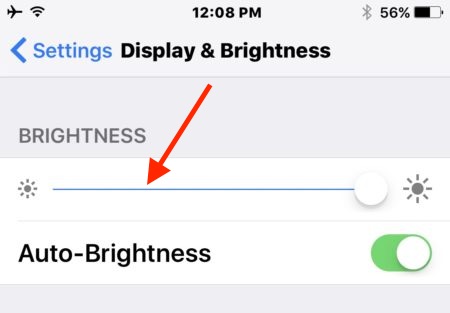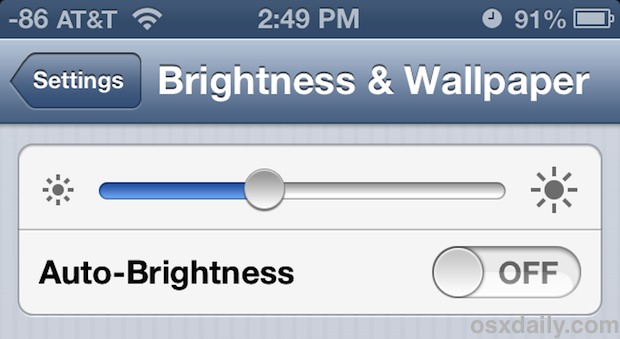How to Change Screen Brightness on iPhone via Settings

The iPhone, iPad, and iPod touch displays have precise brightness controls, and thanks to a light sensor, they’re smart enough to automatically adjust brightness depending on environmental lighting conditions. But it’s not always perfect especially if you use it at night, and if you’re in frequently changing lighting conditions that behavior can reduce battery life.
To put an end to those auto-adjustments of brightness and to change and set the brightness level on iPhone to anything you want, you can head to the iOS Settings app and toggle a switch. You can also use this to change screen brightness to any brightness or dimness setting you want
How to Change Screen Brightness on iPhone
You can get direct control over how display brightness functions in iOS through system settings, and it’s easy to use for precision:
- Open “Settings app” on iPhone
- Tap on “Display & Brightness” (older iPhones will label this as “Brightness & Wallpaper”)
- Adjust the brightness slider for immediate response to how bright or dim the iPhone screen is

Changes are immediate and the screen will be brighter or dimmer depending on what you choose.
Recall that the screen brightness is one of the biggest energy consumers on iPhone and iPad, so keeping the brightness low can help prolong battery life of a device.
Likewise the opposite is true, a bright screen will lead to faster battery life decline on iPhone.
The setting is the same in all versions of iOS, though it may look a bit different on modern versions compared to prior ones with older devices. Nonetheless it’s always a slider that allows you to adjust screen brightness, and there’s an auto-brightness setting to turn this off or on if you want.

You can also decide to stop the Display Auto-Adjusting brightness on iPhone too, in iOS 10 and earlier the setting is as follows:
- Open the “Settings” app then go to “Display & Brightness”
- Flip “Auto-Brightness” to OFF to have the screen stop automatically adjusting brightness
Combining the adjustment with Auto-Brightness OFF means the screen will stay at the exact level that has been set by the slider, it won’t change depending on exterior lighting conditions.
Similarly, setting the brightness level with the slider and keeping auto enabled makes it function as an upper limit, whereas the screen will not go brighter than what is indicated.
The screen can be extremely bright which makes it possible to easily read in direct sunlight, but for most uses and for a longer battery life you’ll find a setting as low as 1/3 or 1/4 is more than adequate for indoor and outdoor situations.,
This is actually a fairly decent way to keep battery life consistent, since maintaining a tolerably lower brightness level can have a significant impact on battery life of the iphone and just about all other mobile devices, and preventing the really bright upward swings will draw less power. You may want to adjust the auto-locking feature as well, which can also dim the screen and turn it off after a specified period of time of inactivity.
If you’re using a Macintosh, you can also use precision display brightness adjustments on Mac, which can be helpful for the same reasons you’d adjust screen brightness on iPhone and iPad.


Can’t I add brightness level to control panel on iPhone SE using IOS 14.6?